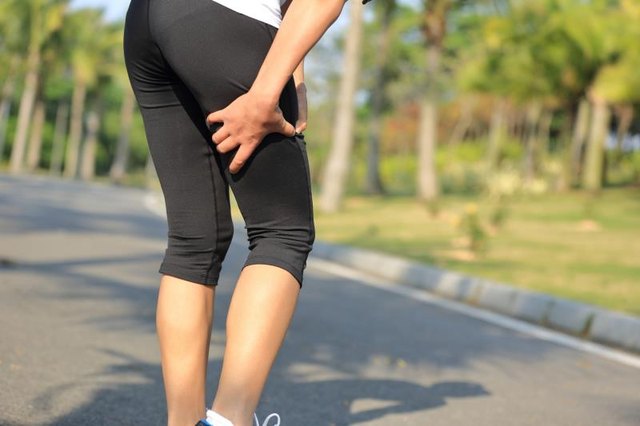
Overview
A pulled, or strained, hamstring can hurt and even be disabling. This injury to the muscles in the back of the thigh often affects athletes, but can happen during falls or other everyday accidents. The pain and accompanying tissue inflammation must be controlled in order for cells to begin rejuvenating and mending the muscle strain. Unless tissue damage is extensive, home remedies will suffice to promote healing and rehabilitation.
Cease Activity
Muscle strains in the leg often occur during sports engagements. Play should be stopped immediately following an injury, or more damage will occur. Muscle tissue fibers that have stretched may suffer greater separation or tear. Rest affords instant pain relief. The National Institutes of Health (NIH) suggest resting with no weight on the leg for 48 hours, elevating the thigh area, if possible.
Apply Ice
Ice packs or chilled reusable gel packs are the recommended first aid treatment by the University of Buffalo Sports Medicine group. These can be applied at the time of the injury and at home, while resting. For the first two or three days of inflammation, 20-minute applications of cold therapy should be used on the pulled hamstring three times a day. Keeping a reusable gel pack in the refrigerator produces a comfortable temperature for effective pain relief.
Support the Leg
The large hamstring muscles must support a great proportion of body weight, and should be supported when walking. The NIH reports that an elastic thigh wrap may suppress inflammation while providing structural support. Using crutches or a cane plays an active role in healing the muscle strain by reducing physical stress on the affected leg.
Apply Heat
Hot compresses, showers, Jacuzzi soaks or heating pads can be used to apply heat a few days after inflammation subsides. Heat reduces muscle tension in a pulled hamstring that is healing.
The NYU Langone Medical Center suggests applying heat for 20 minutes, prior to stretching, when it is safe to resume exercise. Heat can also be used for pain relief by alternating heat applications with cold therapy.
The NYU Langone Medical Center suggests applying heat for 20 minutes, prior to stretching, when it is safe to resume exercise. Heat can also be used for pain relief by alternating heat applications with cold therapy.
Resume Activity
A pulled hamstring can take anywhere from 10 days to three months or more to heal, according to the NYU Langone Medical Center. Gradually resuming activity is essential to minimizing rehabilitation time. Gentle stretches of the muscle strain area should precede strengthening exercises prior to a return to full sports or everyday activity. A doctor or physical therapist can provide targeted exercises that are appropriate for the degree of injury.





No comments:
Post a Comment